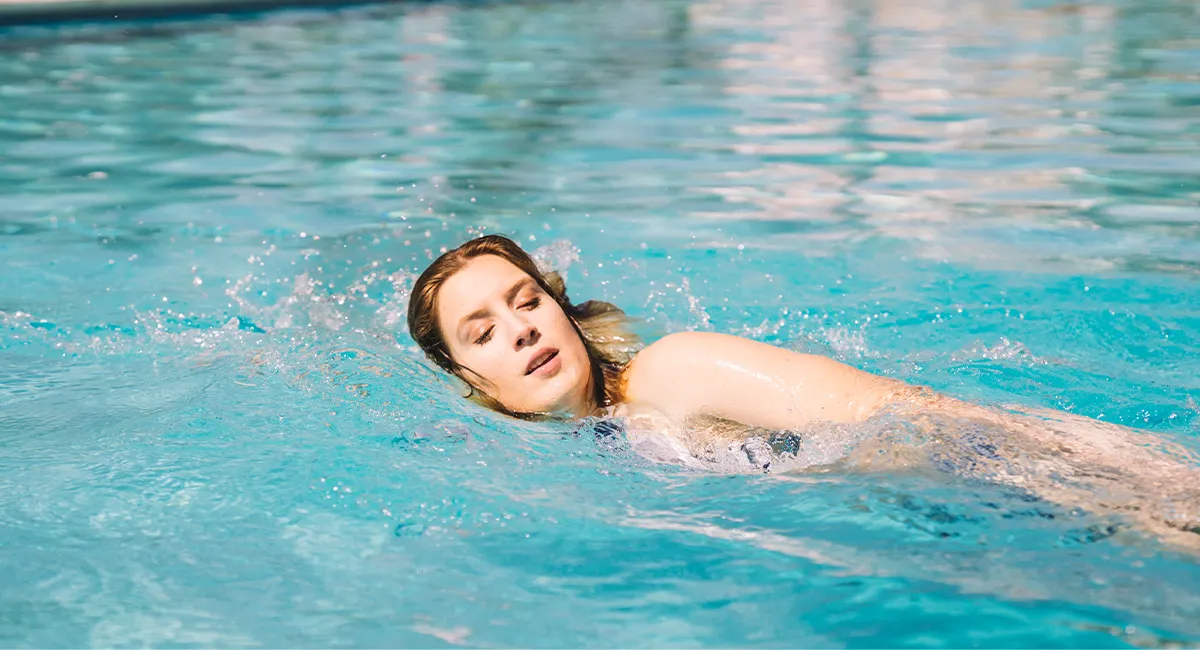
Aquatherapy, also known as aquatic therapy or hydrotherapy, is a therapeutic approach involving exercises and activities in water. This method uses the special qualities of water to help with recovery, relieve pain, and boost well-being in a refreshing way.
How Does Aqua Therapy/Hydrotherapy Work?
The magic of Aquatic Therapy/Hydrotherapy lies in the physical properties of water:
- Buoyancy: Water reduces the body’s weight, making movements easier and less painful, especially for individuals with joint issues or limited mobility.
- Hydrostatic pressure: The pressure exerted by the water helps to reduce swelling, improve circulation, and support the body.
- Viscosity: Water’s natural resistance helps create a challenging workout while reducing the stress and impact on your joints compared to land exercises.
- Water temperature: Warm water helps to relax muscles, reduce pain, and improve blood flow.
The Benefits of Aquatherapy/Hydrotherapy
Pain Relief
The buoyancy of water reduces weight-bearing stress on the joints, making it an ideal choice for individuals with arthritis, back pain, or other musculoskeletal conditions. The warm water also helps to soothe sore muscles and reduce inflammation.
Improved Range of Motion
The water’s resistance can help to increase flexibility and range of motion. You can easily perform gentle stretching and movement exercises, allowing for greater freedom of movement.
Strength and Endurance
Even though moving in water feels easy, aquatherapy can still be a tough workout. The water’s resistance helps build muscle strength and endurance without putting too much strain on your joints.
Enhanced Balance and Coordination
The water environment helps to challenge balance and coordination in a safe and supportive manner. This is particularly beneficial for older adults or individuals.
Cardiovascular Health
Water therapy offers a gentle, low-impact aerobic workout that boosts cardiovascular health without putting extra stress on the heart, unlike exercises done on land.
Mental Well-being
The calming and immersive nature of water can help reduce stress, anxiety, and depression. The feeling of weightlessness and freedom in the water can also be deeply therapeutic.
Injury Rehabilitation
Water therapy is often used as part of a rehabilitation program following surgery or injury.
Who Can Benefit from Aqua Therapy?
Aqua Therapy/Water Therapy is suitable for individuals of all ages and fitness levels, including:
- People with arthritis, joint pain, or osteoporosis
- Individuals recovering from surgery or injury
- Those with chronic pain conditions
- People with neurological disorders (e.g., Parkinson’s disease, multiple sclerosis)
- Pregnant women
- Athletes seeking cross-training or injury rehabilitation
- Seniors looking to maintain or improve fitness levels
Getting Started with Aquatic Therapy
A water therapist or qualified aquatic exercise instructor can develop a personalized program based on your specific needs.
To maximize the benefits of aquatherapy, it is important to find a facility with a warm, clean pool and qualified staff. Regular participation is key to achieving optimal results.
